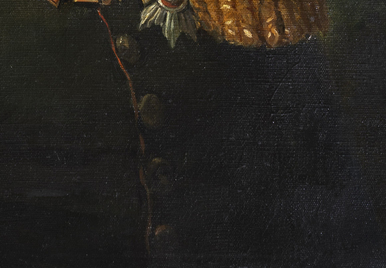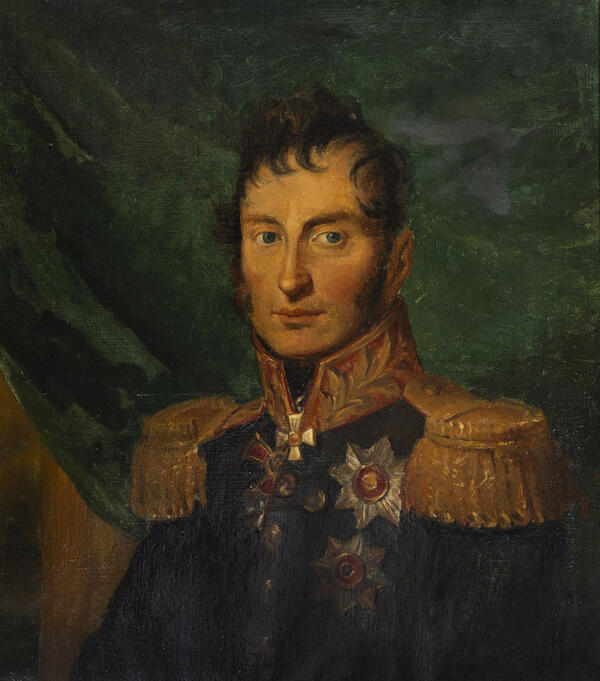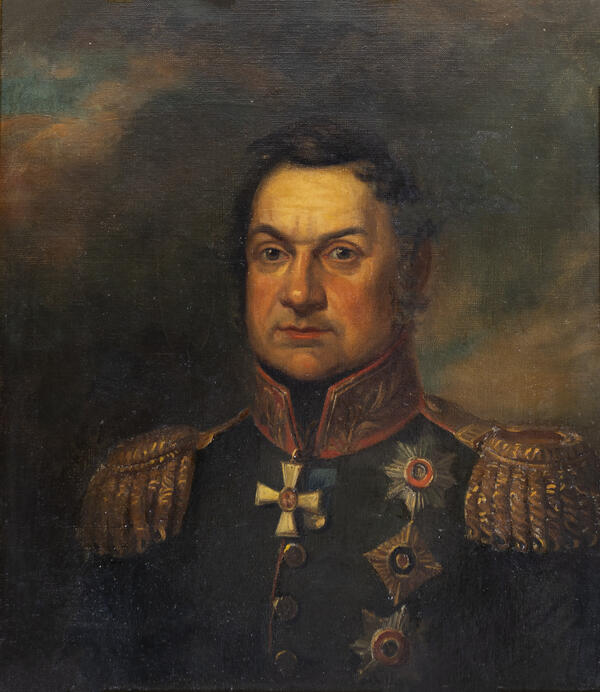Count Alexander Ivanovich Kutaisov was the son of a favorite of Emperor Paul I. In 1793, he was enrolled in the Life Guards Cavalry Regiment and later in the Preobrazhensky Life Guards Regiment. Three years later, he was transferred in the rank of a captain to the Velikiye Luki Infantry Regiment.
In 1799 Kutaisov was promoted to colonel. He began his service in the Life Guards Artillery Battalion as an adjutant to General Alexey Andreyevich Arakcheyev. In 1805, Kutaisov took part in a military campaign in Austria. In 1806, he was promoted to major general.
In the campaign of 1806, the commander participated in the Battle of Golymin. For his efforts at Preissisch-Eylau, he was awarded the Order of St. George, 3rd class, and for his actions at Lomitten — the Order of St. Vladimir, 3rd class, and for the battle of Friedland — a golden sword “For Bravery” with diamonds.
In 1809, he was appointed artillery chief of the corps of General Sergey Fyodorovich Golitsyn and participated in a campaign in Galicia. Before the campaign of 1812 began, he compiled the “General Rules for Artillery in a Field Battle”, which in fact became the first charter of the troops.
In February 1812, Alexander Kutaisov commanded the artillery of the 1st Western Army. He participated in the battles of Kochergishki and Kukovyachino, where he was wounded by a bullet in his right leg, and also fought on the Luchyos River, in the Battle of Smolensk, at Valutino and Solovyov Crossing. In the Battle of Borodino, the count commanded all Russian artillery, but died during a counterattack to liberate the Raevsky battery. His body was never found.
George Dawe painted a portrait of Alexander Kutaisov in the 1820s specifically for the Military Gallery of the Winter Palace. He depicted him in the uniform of a general of foot artillery of the 1817 model with the badges of the Orders of St. George, 3rd class, St. Vladimir, 3rd class, and the commander’s cross of the Order of St. John of Jerusalem.
When working on the portrait of the general who died in the Battle of Borodino, the artist possibly used one of the existing engravings by Francesco Vendramini or Salvatore Cardelli made during Kutaisov’s lifetime as a reference. The reproduction housed in the Borodino Museum-Reserve was made by the artist Dmitri Vasilyevich Titov in 1953.





